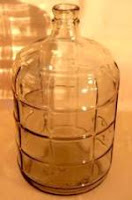Cellar Craft has recently started including an Enzyme Blend packet with all of their red wine kits which contain a bag of crushed grape skins. The packets received here at BlueStem Winery did not receive instructions on proper use but instructions have now been obtained from Cellar Craft.
There are several problems that this enzyme packet is designed to address among which is a problem with an oily film developing on the surface of the red wines and also a problem with wines not clearing properly.
Please note these points:
The enzyme is deactivated by the use of Bentonite so the wine must be racked prior to adding the enzyme.
The enzyme is most effective if added when fermentation is complete or nearly complete (specific gravity less than 1.000). The crushed grape wine kits benefit from extended contact with the grape skins so it is recommended by Cellar Craft that the first racking be delayed until day 10 to 12. The skins can then be discarded and the enzyme added to the wine.
Primary fermentation: As per normal instructions.
Secondary fermentation: On day 10-12 rack wine per instructions to clean carboy. Add enzyme after racking is complete.
Stabilization, clearing and bottling as per normal instructions.
If you have questions you can e-Mail BlueStem Winery at bluestemwine@mchsi.com or call us at (319) 346-1046 or (from the United States) you can call Cellar Craft direct at (800) 665-1136.
There are several problems that this enzyme packet is designed to address among which is a problem with an oily film developing on the surface of the red wines and also a problem with wines not clearing properly.
Please note these points:
The enzyme is deactivated by the use of Bentonite so the wine must be racked prior to adding the enzyme.
The enzyme is most effective if added when fermentation is complete or nearly complete (specific gravity less than 1.000). The crushed grape wine kits benefit from extended contact with the grape skins so it is recommended by Cellar Craft that the first racking be delayed until day 10 to 12. The skins can then be discarded and the enzyme added to the wine.
Primary fermentation: As per normal instructions.
Secondary fermentation: On day 10-12 rack wine per instructions to clean carboy. Add enzyme after racking is complete.
Stabilization, clearing and bottling as per normal instructions.
If you have questions you can e-Mail BlueStem Winery at bluestemwine@mchsi.com or call us at (319) 346-1046 or (from the United States) you can call Cellar Craft direct at (800) 665-1136.






